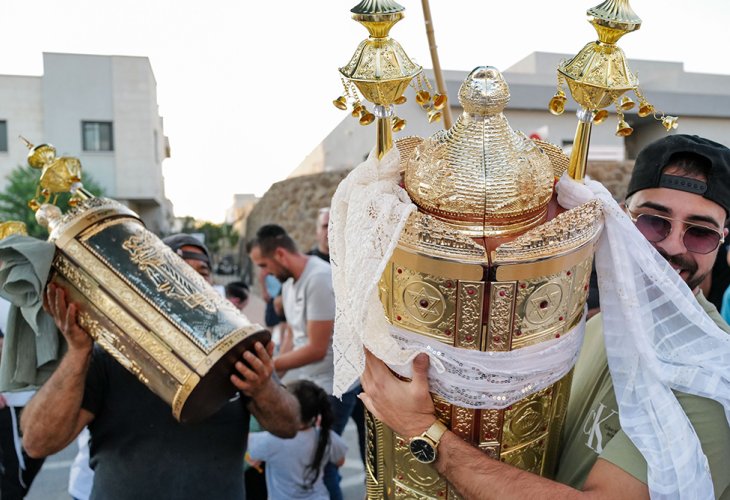Facts in Judaism
A Torah Scroll Dedication: 10 Facts About This Moving Jewish Ceremony
Why are Torah scroll dedication ceremonies so meaningful, and which traditions are observed during this event?
 (Photo: Michael Giladi / Flash 90)
(Photo: Michael Giladi / Flash 90)A Torah scroll dedication ceremony is undoubtedly a moving event. This magnificent occasion leaves a deep impression on the hearts of Jewish men, women, and children from all communities and sectors.
Here are some moving facts about this sacred ceremony:
1. A Torah scroll dedication ceremony is held when a new Torah scroll is completed or a Torah scroll is transferred from one synagogue to another.
2. A sofer stam (a specially trained and God-fearing scribe) writes the Torah scroll by hand using a special quill and ink. The scribe must study over 4,000 laws before writing a Torah scroll. If even one single letter is missing or written incorrectly, the entire Torah scroll is invalid.
2. The final letters in the Torah scroll are traditionally written by distinguished members of the community, and each individual is honored by writing one letter, (usually with the assistance of the sofer stam). Some communities insist that the people who write the final letters must immerse themselves in a mikveh (ritual bath) that day.
3. During the procession, the Torah scroll is adorned with a crown, and celebrants hold a canopy with four poles above it.
Typically, the donor is honored with holding the Torah scroll.
4. Some communities have the custom of wearing Shabbat clothes to honor the occasion.
5. The Torah dedication ceremony includes joyful dancing and singing that begins in the home or building where the Torah scroll is completed and continues until it enters the synagogue. In the background, an orchestra plays Jewish songs that emphasize the Torah's honor.
6. Throughout the procession, sweets and various foods are distributed to participants. After the Torah scroll is ushered into the synagogue and placed in the aron kodesh (holy ark), a festive meal is held, and a Torah scholar delivers a discourse in honor of the Torah.
7. At the end of the procession, as the Torah scroll approaches the synagogue, celebrants bring the older Torah scrolls out and hold them as they dance alongside the new scroll, singing: "Lift up your heads, O gates, and be lifted up, O ancient doors, that the King of glory may come in."
Afterward, they dance with the new Torah scroll in the synagogue itself before placing it in the aron kodesh.
8. It is customary to place the Torah scroll in the aron kodesh, and then remove it while reciting verses from "You have been shown to know" (the verses traditionally recited on the holiday of Simchat Torah) and read from the Torah portion of "V'zot Habracha" (without reciting a blessing) beginning with the verse "The eternal God is your dwelling place" until the end of the portion.
9. After reading these verses, the Torah scroll is returned to the ark. The honored donor recites the "shehecheyanu" blessing when reading from the Torah scroll for the first time.
10. It is proper to fulfill this mitzvah in the most ideal fashion. Halachically, it is preferable to loan the Torah scroll to the synagogue rather than giving it as a gift, so the scroll remains the legal property of the owner. For this reason, it is customary to create a loan agreement between the Torah scroll donor and the synagogue.

